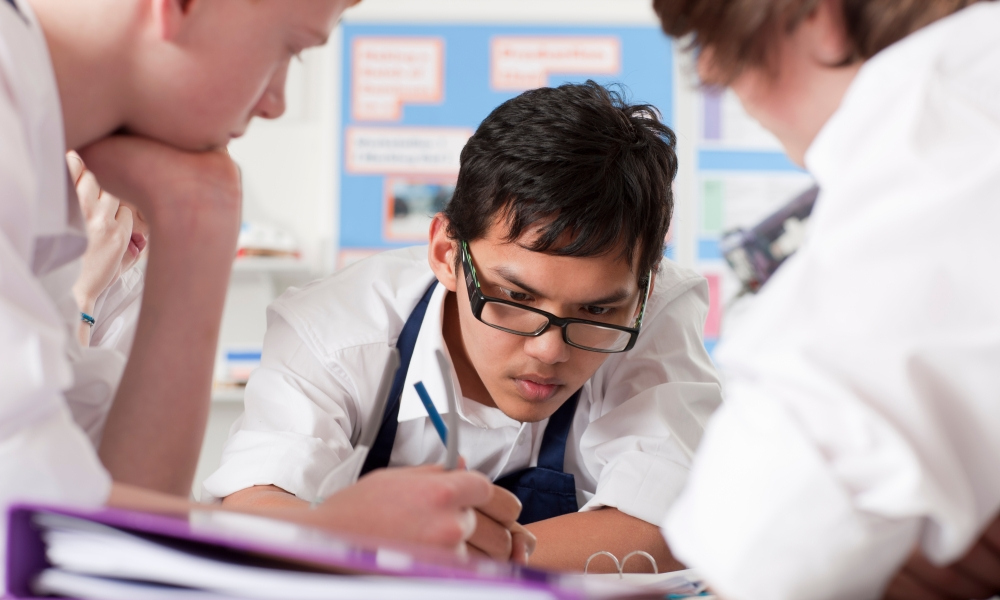At the start of the millennium, students around the world participated in PISA (the Programme for International Student Assessment) for the first time. Twenty years on, what can the wealth of data collected so far tell us about education in Australia?
That's the focus of a special issue of the Australian Journal of Education (AJE) – 20 years of PISA in Australia: What can we say? – published this month. It features six articles from respected researchers and experts in their field. Three of the articles investigate change over time using data from several PISA test cycles, and three delve into the results from a single cycle. The entire issue is available to read for free online during November. Article authors will also be taking part in a free webinar and panel discussion on Wednesday 4 November.
PISA measures how well 15-year-olds are prepared to use their skills and knowledge to meet real-life challenges. The Australian Council for Educational Research (ACER) has managed PISA in Australia, on behalf of the OECD, since it began.
‘Beginning in 2000, every three years, a sample of Australian students completes an assessment in reading, mathematical and scientific literacy, along with other areas of interest, to gauge how well students are able to apply their learning,' AJE guest editor Kylie Hillman notes in her editorial. ‘In addition, PISA collects attitudinal data on students' interest and self-efficacy, along with reports of students' experiences of various aspects of school life, such as interactions with teachers and other students.'
Hillman is an ACER Senior Research Fellow who has worked with PISA data and secondary analyses of the data for many years. She adds: ‘The articles in this Special Issue illustrate how further analyses of the PISA data can be used to address various questions about the education of our young people and highlight why Australia's participation in such extensive and repeated data collections can be of value to educators, researchers and policymakers.'
The six articles in the special issue are:
Does student year level contribute to the declining trend in PISA reading, mathematics and science in Australia? John Ainley, Dan Cloney and Jess Thompson investigate the decline in PISA scores of Australian students over the years and hypothesise that some of this decline may have resulted from shifts in the age-grade distributions of students in the assessment samples. Their article explores ‘the extent to which differences between Grades in achievement and changes in the grade distributions of students contributed to changes in average PISA achievement scores'.
The impact of mathematics anxiety on self-regulated learning and mathematical literacy. Florence Gabriel and Sarah Buckley investigate the motivational, emotional and cognitive factors involved in self-regulated learning and their role in mathematics learning. Using 2012 PISA data, they analyse the impact of mathematics anxiety and self-regulated learning on mathematical literacy. They also discuss ‘how interventions to reduce students' mathematical anxiety will allow for the development and/or improvement of self-regulated learning skills in mathematics'.
A case of being the same? Australia and New Zealand's reading in focus. Like Australia, New Zealand has participated in every PISA test cycle since 2000. In this article, Emma Medina and Megan Chamberlain take a look at the reading literacy performance of students in both countries. ‘While there are similarities among the two countries' 15-year-olds, evidence shows practices are diverging at the middle primary schooling level, which may be impacting positively on younger Australian cohorts …' they report.
Relating teenagers' science interest network characteristics to later science course uptake: An analysis of Australian PISA 2006 and LSAY data. Maien Sachisthal, Brenda Jansen, Jonas Dalege and Maartje Raijmakers combine data from the Australian PISA 2006 test and Longitudinal Surveys of Australian Youth 2008, and use a science interest network model to investigate student decisions to enrol in a chemistry, physics or biology course in Year 12. ‘Future intentions of science and science enjoyment were the most central indicators for all three science courses,' they report, and suggest interventions around enjoyment of science and future intentions could help declining course enrolments in Australia.
Comparative analysis of student performance in collaborative problem solving: What does it tell us? Claire Scoular, Sofia Eleftheriadou, Dan Cloney, Charlotte Waters and Dara Ramalingam point out collaboration is of growing interest to policymakers, educators and researchers, but it's also a complex skill. The researchers explore data from the PISA 2015 test cycle, which also assessed collaborative problem solving. They analyse data from this assessment and compare it with data from two other assessments of collaboration. ‘These investigations generate better understanding of this complex and innovative domain.'
The changes in attitudes of 15-year-old Australian students towards reading, mathematics and science and their impact on student performance. I Gusti Ngurah Darmawan explores how student attitudes to reading, mathematics and science (and their performance in these assessment domains) has changed across the six test cycles. ‘The levels of enjoyment of the subject domains were relatively low for reading and mathematics but relatively high for science. There were upward trends in the levels of enjoyment of mathematics and science over time, while levels of enjoyment of reading did not change significantly,' the author notes, adding there were positive relationships between attitudes and performance.
Contributors to the AJE Special Issue will be sharing their insights in a free webinar on Wednesday 4 November. Numbers are limited, click on the link to register. The webinar will be hosted by AJE Editor and ACER Senior Research Fellow Dr Petra Lietz and will include John Ainley, Claire Scoular, Florence Gabriel, Kylie Hillman and Emma Medina in a wide-ranging discussion of their findings, and of 20 years of PISA.
References
Ainley, J., Cloney, D., & Thompson, J. (2020). Does student grade contribute to the declining trend in Programme for International Student Assessment reading and mathematics in Australia?. Australian Journal of Education. https://doi.org/10.1177/0004944120948654
Chamberlain, M. C., & Medina, E. J. (2020). A case of being the same? Australia and New Zealand's reading in focus. Australian Journal of Education. https://doi.org/10.1177/0004944120953235
Darmawan, I. G. N. (2020). The changes in attitudes of 15-year-old Australian students towards reading, mathematics and science and their impact on student performance. Australian Journal of Education. https://doi.org/10.1177/0004944120947873
Gabriel, F., Buckley, S., & Barthakur, A. (2020). The impact of mathematics anxiety on self-regulated learning and mathematical literacy. Australian Journal of Education. https://doi.org/10.1177/0004944120947881
Sachisthal, M. S., Jansen, B. R., Dalege, J., & Raijmakers, M. E. (2020). Relating teenagers' science interest network characteristics to later science course enrolment: An analysis of Australian PISA 2006 and Longitudinal Surveys of Australian Youth data. Australian Journal of Education. https://doi.org/10.1177/0004944120957477
Scoular, C., Eleftheriadou, S., Ramalingam, D., & Cloney, D. (2020). Comparative analysis of student performance in collaborative problem solving: What does it tell us?. Australian Journal of Education. https://doi.org/10.1177/0004944120957390



